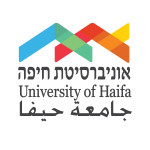Tifnout (Tīfnūt)
The valley of the Tifnout region is located below Mount Toubkal (at an altitude of 4,167 meters), between the High *Atlas Mountains in the west and the Sirwa massif in the east, above the *Sous valley. It hosted a number of small communities whose precise origin is unknown but were probably not that old (earliest evidence dates from the beginning of the twentieth-century, suggesting the existence of Jews in the region in the nineteenth-century). They were among a very few communities in Morocco that were primarily monolingual Judeo-Berber speaking until the twentieth-century. Their linguistic characteristics had to do with their isolation in a Berber-speaking environment (among the Aït Wawzgit) at the foothill of the highest peak in North Africa (4,167 meters). Documents about the community include testimonies of the last speakers and a Hebrew chronicle from the early twentieth-century. After the French conquest of the High Atlas, these communities also spoke Judeo-Arabic in their business relations with *Marrakesh and the Sous region. However, they were unable to develop an oral or written Judeo-Berber culture, because they were poor, living off small trade and simple crafts, and extremely isolated—unlike the Judeo-Arabic or Judeo-Spanish culture that flourished in Morocco. The most significant figure of this community was the mysterious healer Ya’aqov Wazana, who was born in Asarag and was considered a saint after his death in the 1950s.
The two main communities were in Asarag and Sour, but there were many small ones—Imlil, Wawenzur, Imzgemmar, Amezzarkou, Igidi, Id Rgan, and Tabya, following the river downstream towards Awlouz in the high Sous, and Azrou n’Aït Telti, Inmarakht, Tazolt, Timzdott, Aït Bu Ihya, Igadain and Timzritt on the other side, towards Tidili. Until World War II and before the exodus to Marrakesh and Casablanca, most communities consisted of 10 to 20 families, and some even fewer; in most places the houses of Jews and Muslims were side by side. With the improvement of roads in the twentieth-century, many members left for large centers like Marrakesh and *Casablanca, before immigrating to Israel, beginning in 1955 and the last ones, like Sour, in 1963.
Bibliography
Bilu, Yoram. Without Bounds: The Life and Death of Rabbi Ya’aqov Wazana, (Detroit, Wayne State University Press, 2000).
Chetrit, Joseph. “Le judéo-berbère et ses usages au Maroc: dépôts lexicaux, textes parodiques et textes calques.” in Joseph Chetrit, Diglossie, Hybridation et Diversité intra-linguistique. Etudes socio-pragmatiques sur les langues juives, le judéo-arabe et le judéo-berbère (Paris and Louvain: Peeters 2007), 213-326.
Goldberg, Harvey E. “The Mellahs of Southern Morocco: Report of a Survey,” The Maghreb Review, 8, 3-4 (1983).
Zafrani, Haim. Littératures dialectales et populaires juives en Occident Musulman: l’écrit et l’oral (Paris: Geuthner, 1980).

